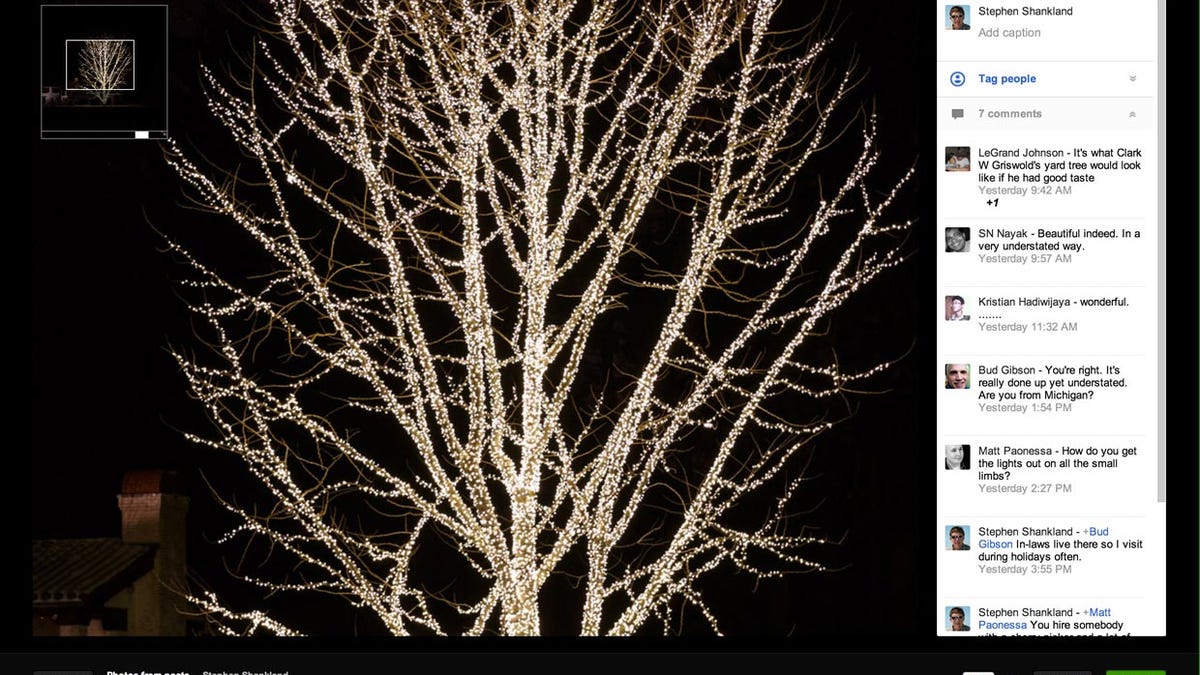Google+ one-ups rivals with zoomable photos
Being able to dive into photo details is a great feature for making photography more engaging. But too bad about the photo-size limit that precludes full immersion.
Google, which found early success for Google+ among photographers and has been working to keep them happily sharing on its social network, has added the ability to zoom into pictures.
Flickr, Facebook, and other photo-sharing sites offer a larger view of photos, but it's usually at least one click away from the smaller photo that shows by default. Google offers that ability, and last night went one step further by letting people use the mouse scroll wheel to dive further into a photo.
Once zoomed in, clicking and dragging lets people pan around to explore the photo at the deeper zoom level.
When you first start zooming in, there's often a bit of a lag, presumably to let a higher-resolution version of the image load. But it's not that bad, and I think the feature is a great improvement for making photography more immersive.
Dave Cohen, a photographer and Google+ team leader, announced the Google+ photo zoom feature late yesterday.
When you upload photos to Google+ over the Web, Google downsamples the maximum dimensions to 2,048 pixels. You can bypass this by uploading images directly from an Android phone via Google+ instant upload or by using Google's Picasa software, but unfortunately, there's no point in doing so, at least for now, when it comes to the zoom feature: All you'll see is a smeary mess of compression artifacts. See the comparisons below to see what I mean. Update Jan. 11: Google has fixed the blurriness issue.
I uploaded a batch of high-resolution photos from a trip to New Mexico and some even higher-resolution 60- and 80-megapixel shots taken with medium-format Phase One cameras of San Francisco and England. Unlike with a 2,048-pixel image, you can zoom in all the way -- but you can't see the individual pixels.
But I shouldn't be too crabby about this. High-resolution imagery means heavy network usage and slow performance. Perhaps Google will lift the limits further down the road. With Retina displays and other high-resolution screens, I certainly hope so.
Flickr, to its credit, has offered high-resolution photo views for years and years, though some photographers choose not to make those versions available to the public. Google's Picasa Web Albums, which feels like a somewhat neglected property to me, lets you zoom using Flash Player. And Microsoft has worked on live photo-zooming with technology called SeaDragon. Google+, though, has built in the zoom feature seamlessly and automatically, which really is the way to ensure it's easy to use and that lots of people will use it.


